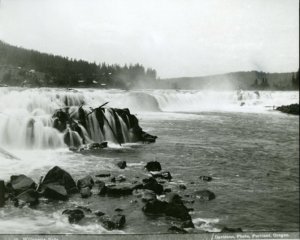Presented By: Museum of Anthropological Archaeology
Above the Falls: The Story of the Peoples of the Upper Willamette Valley in Oregon Amid the Absence of Abundant Salmon Runs
Weston Wardle, PhD Candidate, University of Michigan Museum of Anthropological Archaeology

Salmon fishing was a major activity for people living along the Lower Colombia River in Oregon. But the Willamette Valley in Oregon has a major barrier to salmon runs: Willamette Falls. Above this barrier, indigenous communities in the Upper Willamette Valley developed different responses to fewer and more limited salmon runs. The most significant of these was the use and intensification of camas (Camassia quamash). The story of this plant, and the earth ovens constructed to process them, tells us many interesting things about the societies that lived in this valley and how they were similar and different to their nearby neighbors who did have access to abundant and predictable salmon runs.